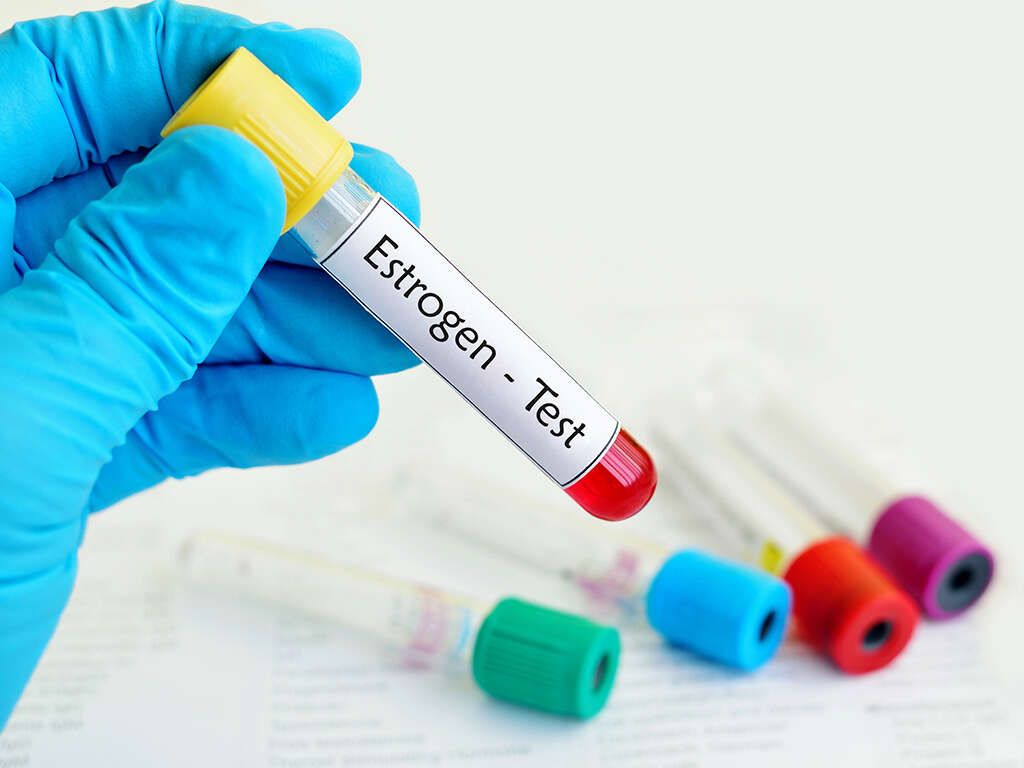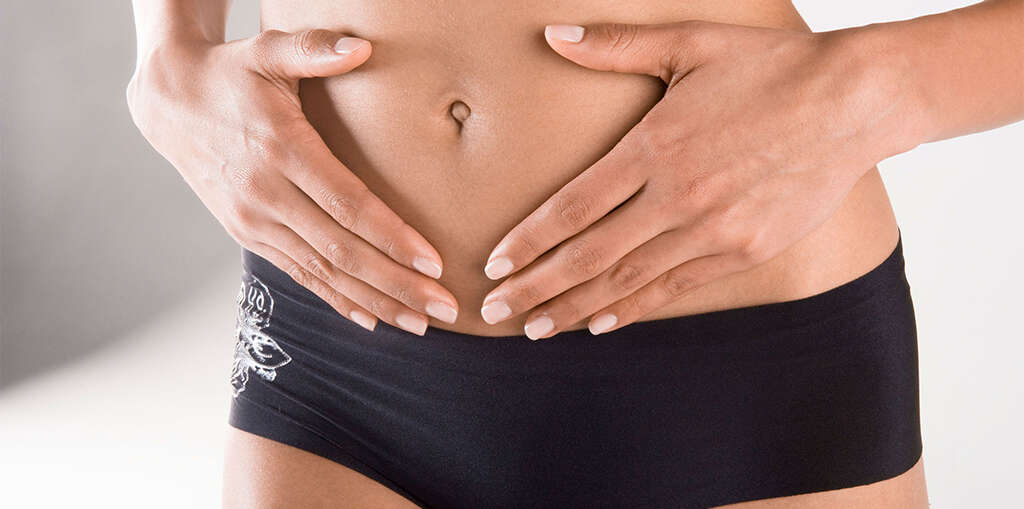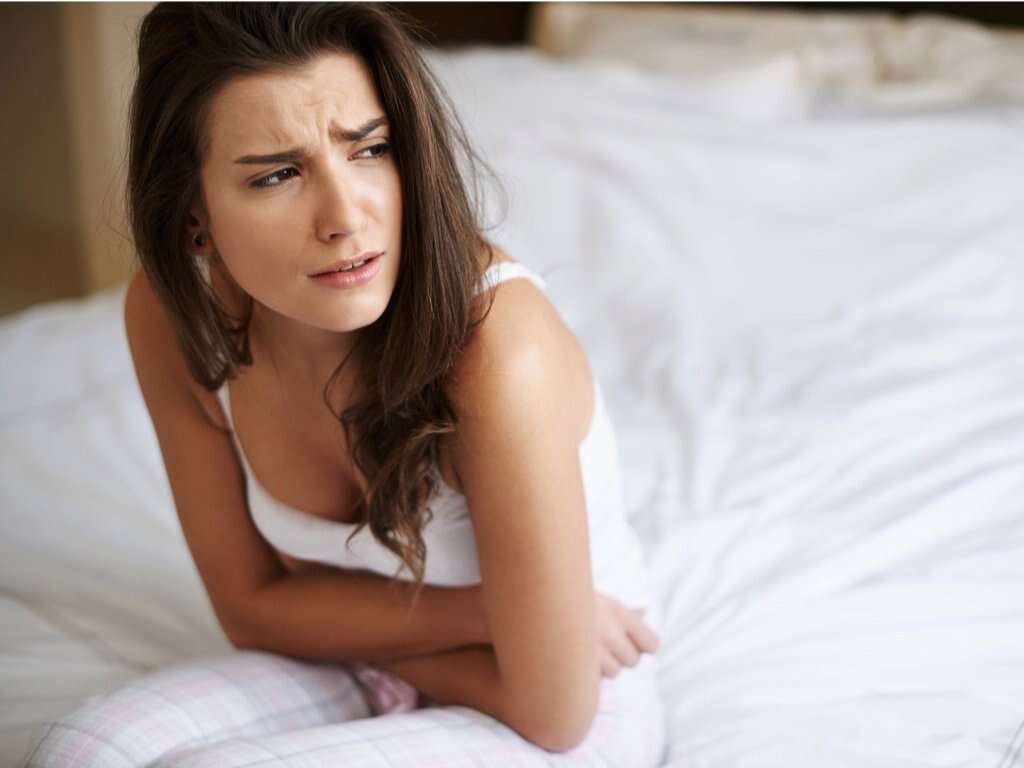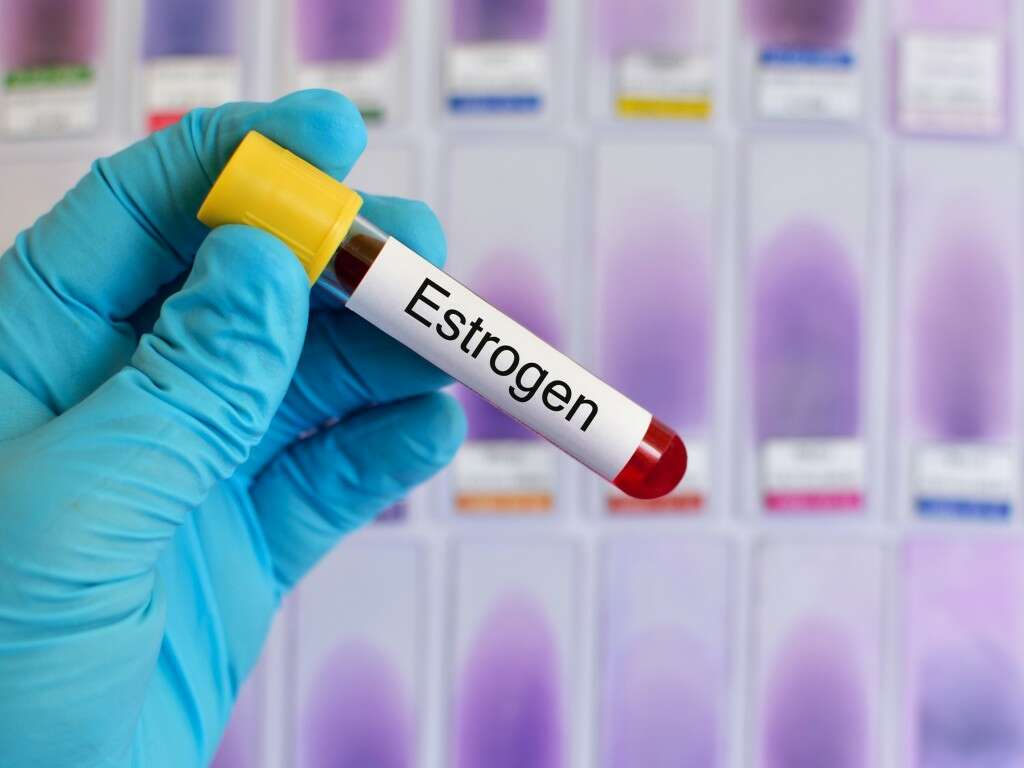10 Estrogen Dominance Symptoms
Estrogen is a something that helps promote the maintenance and development of female characteristics in the body, reproduction, and regulation of the menstrual cycle. When estrogen levels get out of balance with other hormones in the body, it will lead to a number of issues.
Estrogen dominance can occur during perimenopause when progesterone levels begin to decline but estrogen levels remain the same. This causes a hormone imbalance. Having estrogen dominance, there are many moderate to severe symptoms that often mimic menopausal or PMS symptoms. It has been linked to allergies, autoimmune disorders, breast cancer, ovarian cysts, and accelerates the aging process.
Symptom #1: Increased Symptoms Of Premenstrual Syndrome (PMS)
We have all heard about Premenstrual syndrome as early as a woman begins her menstrual cycle. The physical and emotional changes happen before a woman’s menstrual cycle. Some of the emotional and behavioral signs of PMS include depression, mood swings, and anxiety. Some physical signs include fatigue, headache, muscle pain, and acne flare-ups.
Premenstrual syndrome is often caused by estrogen dominance. Before a woman’s cycle, symptoms of a headache, mood swings, depression, fatigue, and skin issues are increased if there is estrogen dominance. Estrogen plays a key role in the effect it has on tissues and the brain, especially relating to a female menstrual cycle.
Symptom #2: Bloating
Abdominal bloating happens when the gastrointestinal tract is filled with gas or air. It is an uncomfortable feeling in the abdomen that is accompanied by frequent burping, pain, flatulence, and abdominal rumbling. Bloating may happen during perimenopause or menopause. When the body has a lower level of hormones, bloating is less likely to happen.
When estrogen is high, women retain more water and will lead to bloating. When a woman’s hormone levels fluctuate, it is more likely that bloating will arise. If lifestyle and medications are not alleviating the bloating, this is a sign that estrogen dominance could be the culprit.

Symptom #3: Fibrocystic Breasts
Estrogen dominance has a correlation with breast cancer. The breast contains cells that are receptors to estrogen and progesterone. With fibrocystic breast changes, the quality of the tissue changes with lumps. Breasts will be painful and tender. This happens because high levels of estrogen and low levels of progesterone cause the connective breast tissue to grow, which creates the bumpy tissue.
Studies have shown that estrogen dominance and progesterone deficiency resulted in fibrocystic disease and an increased risk of breast cancer. This is important for the prevention and cause of breast disease and its correlation to estrogen levels. Perhaps diet and other measures to reduce estrogen in the body would help to reduce this risk factor.
Symptom #4: Depression And Anxiety
Depression and anxiety are symptoms of estrogen dominance. The more estrogen there is in the body, the more cortisol hormone is made. Cortisol is responsible for the fight-or-flight response and helps the body regulate blood pressure, increases blood sugar, keeps inflammation down, and controls the sleep and wake cycle. The more cortisol, the more anxiety will happen.
There are many studies that have shown the direct relationship between estrogen and anxiety and depressive behavior. In one study done on rats, when estrogen was administered it increased their anxiety and depressive behavior. Another study done with rats showed that their panic disorder happened after the estrogen was given.

Symptom #5: Hair Loss
Hair loss can happen due to stress and other causes. It can make anyone self-conscious of how they look, however this can be a temporary symptom. Estrogen dominance can lead to hair loss due to the hormonal changes that happen in the body.
When estrogen levels are high, the hair is thick and full. When estrogen drops, the hair may fall out and become thin. One may think that more estrogen leads to thicker hair. However, when the body has too much estrogen and cannot break it down, the body will have too little progesterone and the imbalance will lead to hair loss.
Symptom #6: Irregular Period
There are various reasons when your period could be early or late. Stress, thyroid problems, polycystic ovary syndrome, birth control pills, or medications are all possible reasons. Estrogen dominance can also lead to irregular periods due to the imbalance of hormones.
Changes in the body’s level of estrogen and progesterone can disrupt a normal pattern of the menstrual cycle. One study conducted with 77 women ranging from mid-reproductive age, late-reproductive age, early menopausal, and late menopausal, analyzed the relationship between estradiol and the relationship of irregular menstrual cycles. It showed that many increases in estradiol were related to cycle irregularities.

Symptom #7: Irritability
Mood changes can be seen in every person and it is normal to feel sad some days or happy on others. However, it is a medical condition when an extremely happy to depressive state happens on a regular basis. With estrogen dominance, irritability can be felt due to the imbalance of hormones which affects the mood.
As estrogen dominance causes depression and anxiety, it will also cause irritability. As estrogen causes the body to produce more cortisol, the mood inconsistencies will happen. Estrogen affects the brain and emotions. The rollercoaster of hormones and too much estrogen will create mood disturbances.
Symptom #8: Polycystic Ovarian Syndrome (PCOS) And Ovarian Cysts
Polycystic ovary syndrome (PCOS) is a common endocrine disorder in women that causes infrequent and prolonged menstrual periods, or excess androgen levels. Those with PCOS have continuous high levels of estrogen and low levels of progesterone. Testosterone is increased due to high levels of luteinizing hormone and insulin. There is a lack of ovulation that results in the constant high levels of estrogen and the insufficient amount of progesterone that follows.
There are many studies linking PCOS with insulin resistance and estrogen dominance. Studies have shown that estrogen dominance occurs in women with polycystic ovary syndrome. In one study regarding ovarian cysts, data suggested that estrogen had a role in the increase of ovarian cysts.

Symptom #9: Endometriosis
Endometriosis is a painful disorder where the tissue that lines inside of the uterus grows outside of the uterus. This does not mean a woman does not stop bleeding during endometriosis. Women still experience painful periods, painful intercourse, painful bowel movements, excessive bleeding, infertility, and other symptoms. It can lead to severe fatigue and weakness for an individual.
Endometriosis thrives off of estrogen. Since estrogen dominance has high amounts of estrogen and not balanced with other hormones, this hormone imbalance may contribute to endometriosis. Scientists believe that endometriosis is an estrogen-dependent disease. More research should be done to confirm and help treat this painful disorder.
Symptom #10: Weight Gain
Weight gain can happen with different types of health issues and lack of exercise. It is also a symptom of estrogen dominance. During estrogen dominance, there is also low progesterone. Low progesterone levels encourage weight gain since progesterone helps the thyroid while increasing metabolism and body temperature. With low progesterone levels, there is not enough to help supply the thyroid. Then metabolism is slower and weight gain is the result.
Some foods can help with weight gain and estrogen dominance. Since excessive estrogen in the digestive tract binds to insoluble fiber, eating foods high in fiber can help intestinal bacteria and reduce the build-up. Foods high in fiber include whole grains, pears, apples, and wheat bran.











